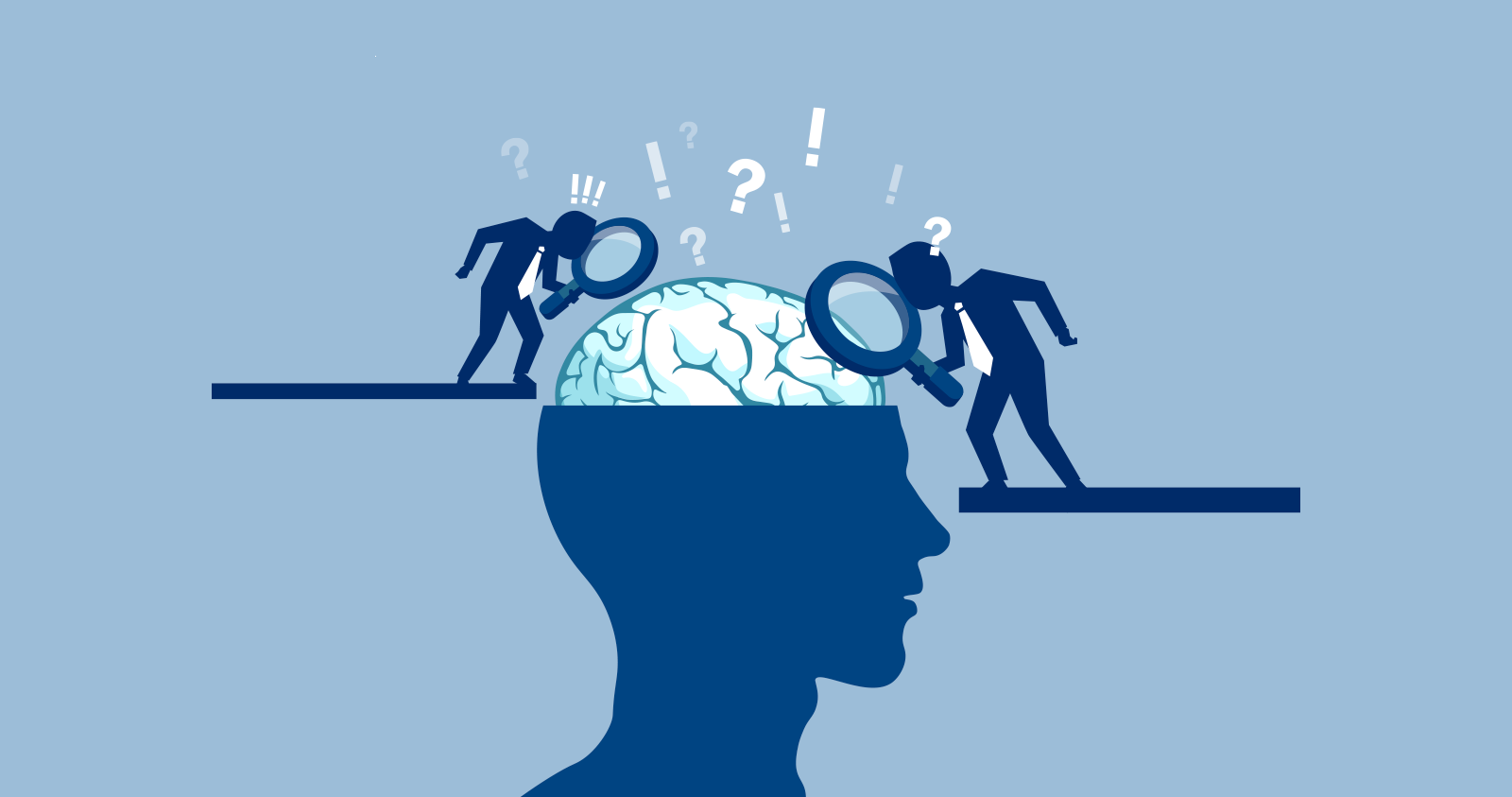How to Use Cognitive Load Theory in Marketing
Cognitive Load refers to the amount of working memory used in a task. It can be used in marketing to ensure the consumer understands and retains your message.

As a marketer your job is to educate, but it’s not an easy task. People's brains and attention spans are getting pulled in hundreds of different directions everyday. How do you effectively deliver your message with so much noise? Psychology offers some unique answers.
To understand how people learn, a psychologist named John Sweller developed something called cognitive load theory. Cognitive load theory might be the secret weapon you need to make sure your message sticks.

Cognitive Load Theory
Cognitive load deals directly with working memory. Your working memory is essentially everything going on in your head that you’re aware of—the cognitive functioning that you consciously control.
When it comes to remembering something, like a string of numbers, working memory is limited to about seven pieces of information at a time. Depending on an individual's brain, some people can handle a heavier cognitive load than others.
More importantly, when your audience is actively processing that information: comparing, contrasting, organizing, or generally working with it, they can usually only deal with two to three items at once.
The amount of information working memory can deal with is quite limited. When working memory is overloaded, meaning there’s too much information for it to handle, learning and recall is impaired.
This overload moment is when your audience’s eyes glaze over and they move on, bounce from your page, forget your product —or worse—they have a perceived bad experience with your brand. Your moment to educate, convert, win, or evangelize is lost.
Cognitive load theory deals with finding just the right amount of information for working memory to be able to solve problems efficiently and easily, without getting overloaded. Marketers have an ally in the consumer’s brain if they know where to look.
Working memory is only part of the story when it comes to cognitive load. One of the ways the human brain deals with avoiding cognitive overload is through long-term memory.
In contrast with working memory, we’re not consciously aware of long-term memory—its contents are placed into the working memory for us to think about and manipulate. Humans can store seemingly unlimited amounts of information in long-term memory, and that information isn't limited to just short-spanned facts. It can be complicated procedures, interactions, and interconnected experiences.
Long-term memories are stored and organized as schemas. A schema is a way of categorizing a piece of information based on how that information will be used. A easy way to conceptualize schemas is this example: even if you’ve never seen a certain type of tree before, you’ll know it’s a tree, because you have a schema for trees (those tall, leafy shapes with textured bark). You don't need to know its species to know that it's a tree.

Another good way of thinking about schemas is through reading. Children learn letters, which are basically specific types of squiggly shapes. Once a child learns that shape, an ‘A’ is always an ‘A,’ no matter the font or handwriting style. From there, the letters can be put into words, and then phrases, and so on, until that child can look at a page full of squiggly lines and derive meaning from it.
Schemas are automated, which also relates to the reading example. When you look at a page, you don’t have to think, “oh, that’s an ‘A,’ so it makes an 'a' sound,” or individually consider each letter in turn. Your brain does the work for you so that working memory load isn’t overwhelmed.
Schemas are important because they reduce working memory load. Although working memory is limited to a certain number of elements, it’s not limited in the complexity of those elements.
Schemas can be very complex. Consider the concept of a restaurant—this involves a great many aspects, like how you should order at a restaurant, what it should look like, the kinds of food that might be served there—but it’s not difficult to consider, because it’s all stored as a schema. It becomes second-nature.
Something to ponder as you think about your own brand is how a restaurant’s schema tells you if it’s high end, fast casual, or a dive from your first glance.
Psychologists believe that it’s these stored long-term memories, rather than working memory, that allow for complex reasoning.
Because schemas themselves can be so complex, working memory is not quite as restricted. The concept of a restaurant, though full of complicated meaning, only takes up one of the few slots available in working memory.
The importance of long-term memory to cognitive load is well illustrated by the differences between a master chess player and an average player.

A highly skilled player is able to store many different chess board configurations into their long-term memory after years of practice, whereas the average player lacks this information. They have seen so many different scenarios play out over so many games, that they are able to 'see' what is going to come next.
Their repeated experiences has heightened their ability to recognize the patterns on the board. It's not necessarily problem-solving that makes a good chess player, but experience and memory.
Because the more novice chess-player doesn’t have access to the same knowledge of chess board states, they’re forced to undergo more complex working memory tasks when considering their next move, which burdens their working memory and makes them less effective.
A person’s working memory can only engage in complex reasoning if the information necessary to the complex reasoning has previously been stored in long-term memory.
This makes dealing with it less complex for working memory.
What Cognitive Load Theory Means for Marketers
Until now, the main application of cognitive load theory has been in education. When educators know that engaging in complex reasoning depends on what past knowledge has already been stored in long-term memory, they can more easily structure lesson plans and curriculums. Addition comes before multiplication, for example
But marketers are educators too. And more effective educating means more effective marketing.
Marketers can use cognitive load theory to make sure they aren’t overloading their customers’ working memory—to hit that sweet spot of processing.
Cognitive load theory is used to predict how the ease of processing is affected by different aspects of cognitive load. The first is intrinsic cognitive load, meaning the material itself, like the words in this sentence.
The next is extraneous cognitive load, or unnecessary additions to cognitive load, like random flashing images that distract from the central message and don't relate to what you're trying to convey.
Finally, there’s Germane Load. Germane load refers to additions that, unlike extraneous cognitive load, help the message come across to the customer. These are aspects that increase the ability to construct schemas, by highlighting what’s important: like making the important words a different color or making them bold.
Cognitive load theory can be a masterful advantage within the marketer's toolkit. It’s helpful to remain mindful that working memory only has so much room, and can be easily overwhelmed. Thus, you should keep your message simple and clear.
Using the schemas in people’s heads allows you to leverage long-term memory to communicate increasingly complex ideas. It’s why a startup will call themselves the “Uber for X” or a brand will have a familiar feel. It reduces friction when trying to convey a story.
In marketing the weight of which an individual consumer can handle a complex cognitive load will vary based on their previous knowledge and experiences, as well as their brain's ability to naturally process new, novel, and complex data.
Some consumers who are more analytical by nature, or who are more comfortable processing complex scenarios, may be more adept at synthesizing, understanding, and retaining messages than others.
It's helpful to know where your customer will fall on this spectrum. If they are able to process a larger cognitive load, perhaps you should send them a dense ebook full of data and examples. If not, perhaps they're better suited for a infographic that simply and visually conveys the key points of your product and service.
For more information on how to understand your customer's personality and related cognitive load, please visit www.sorter.com

